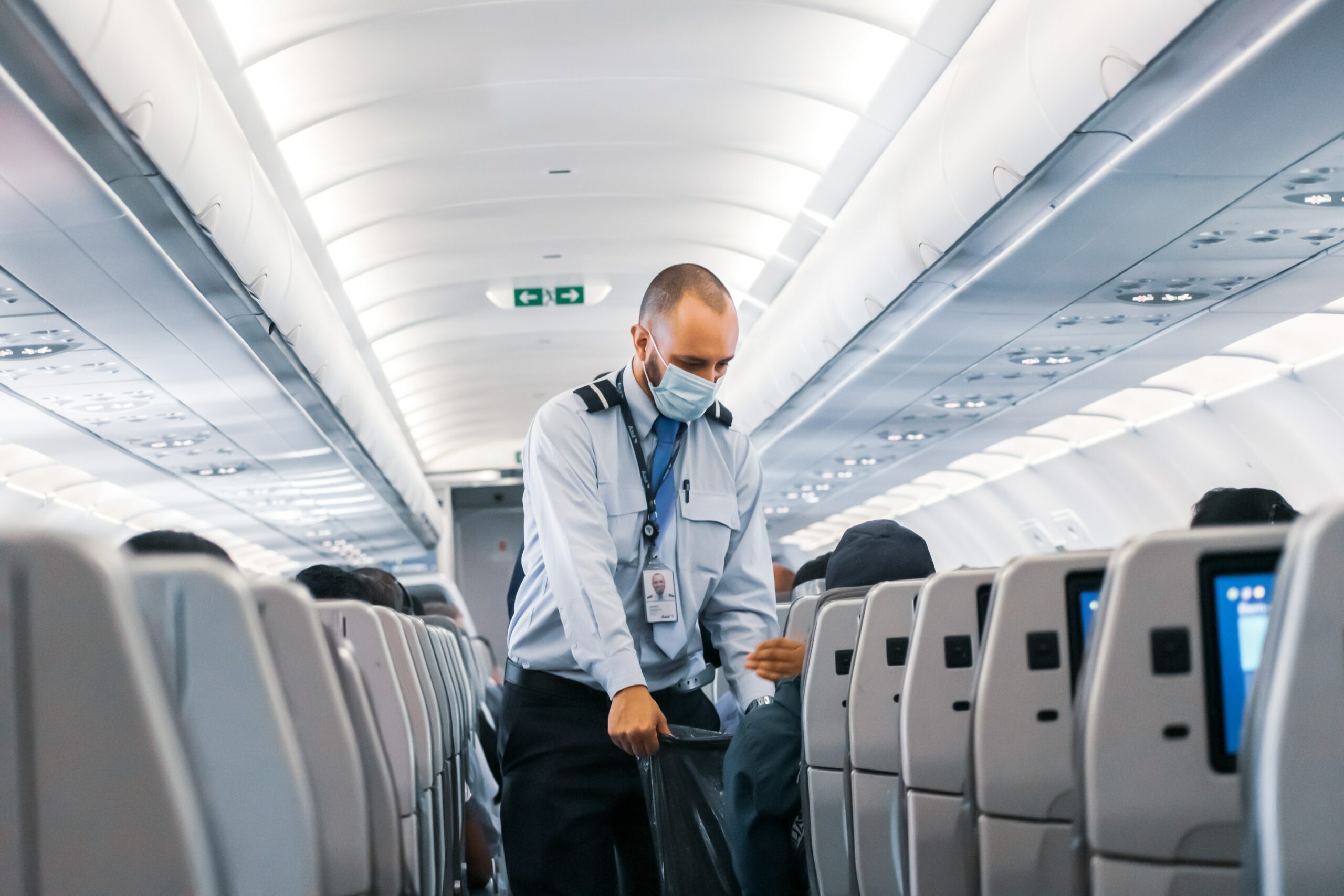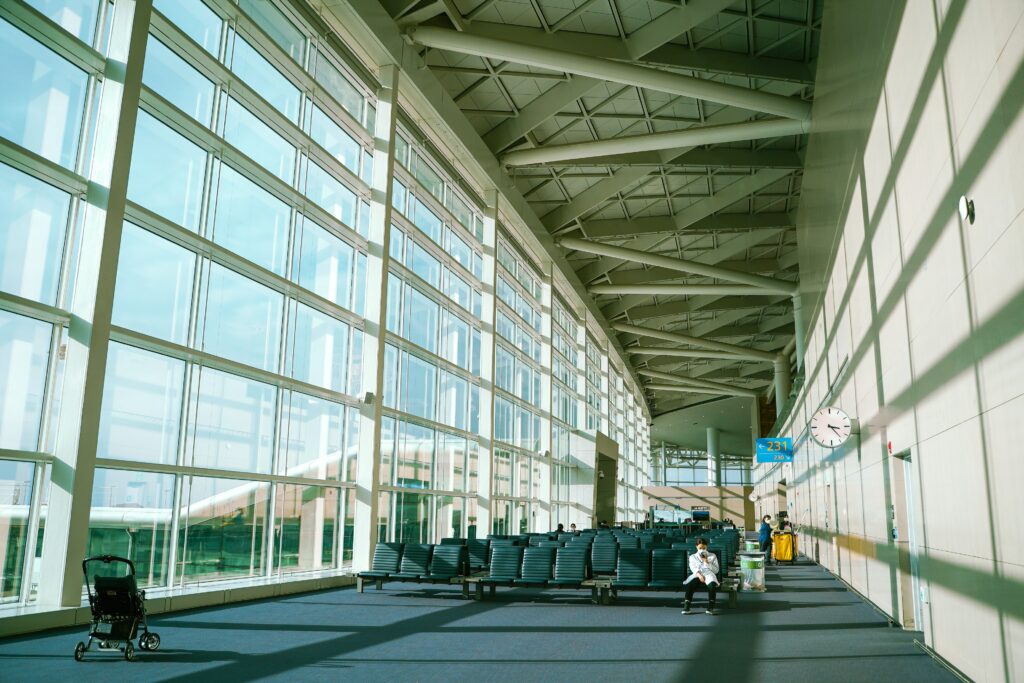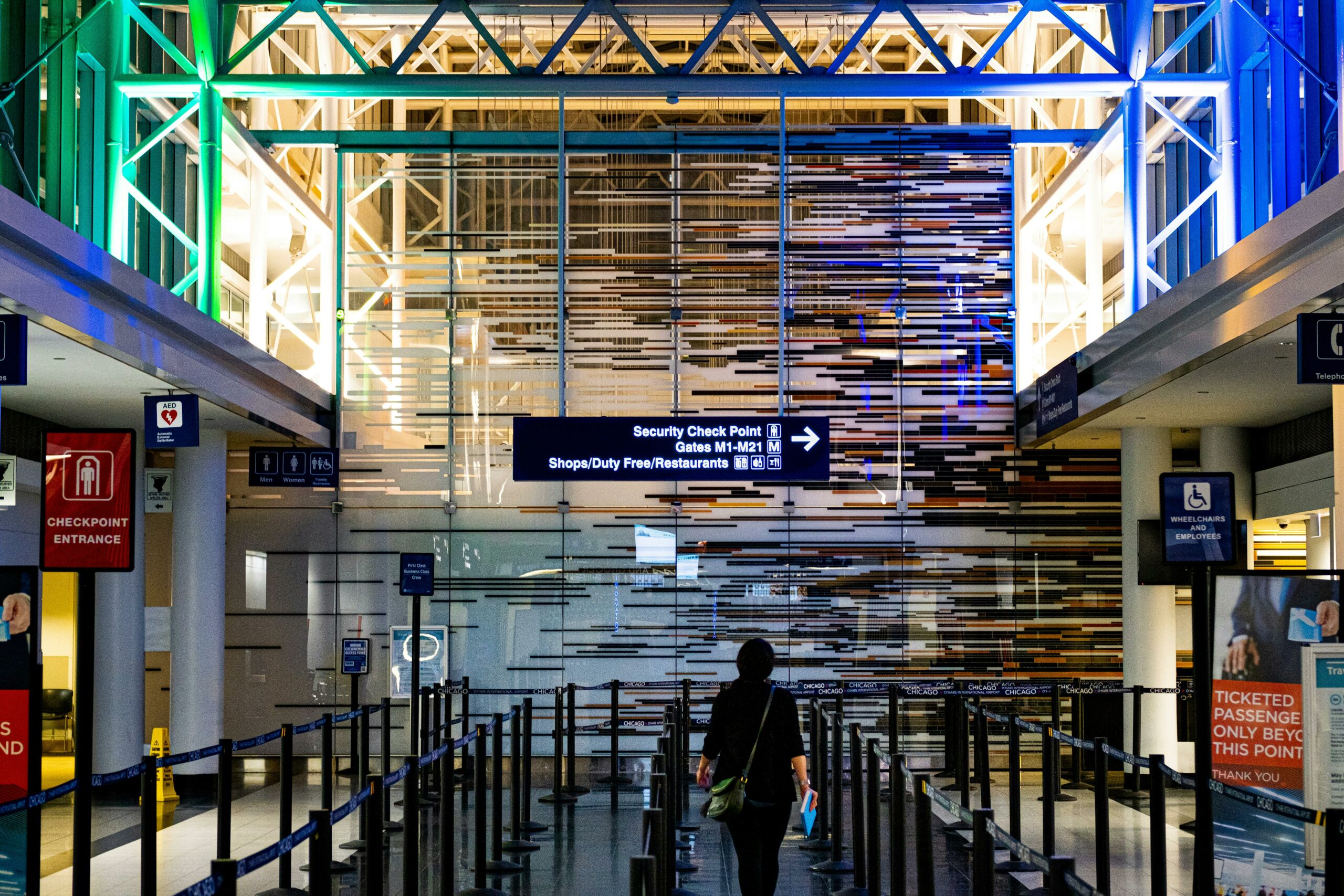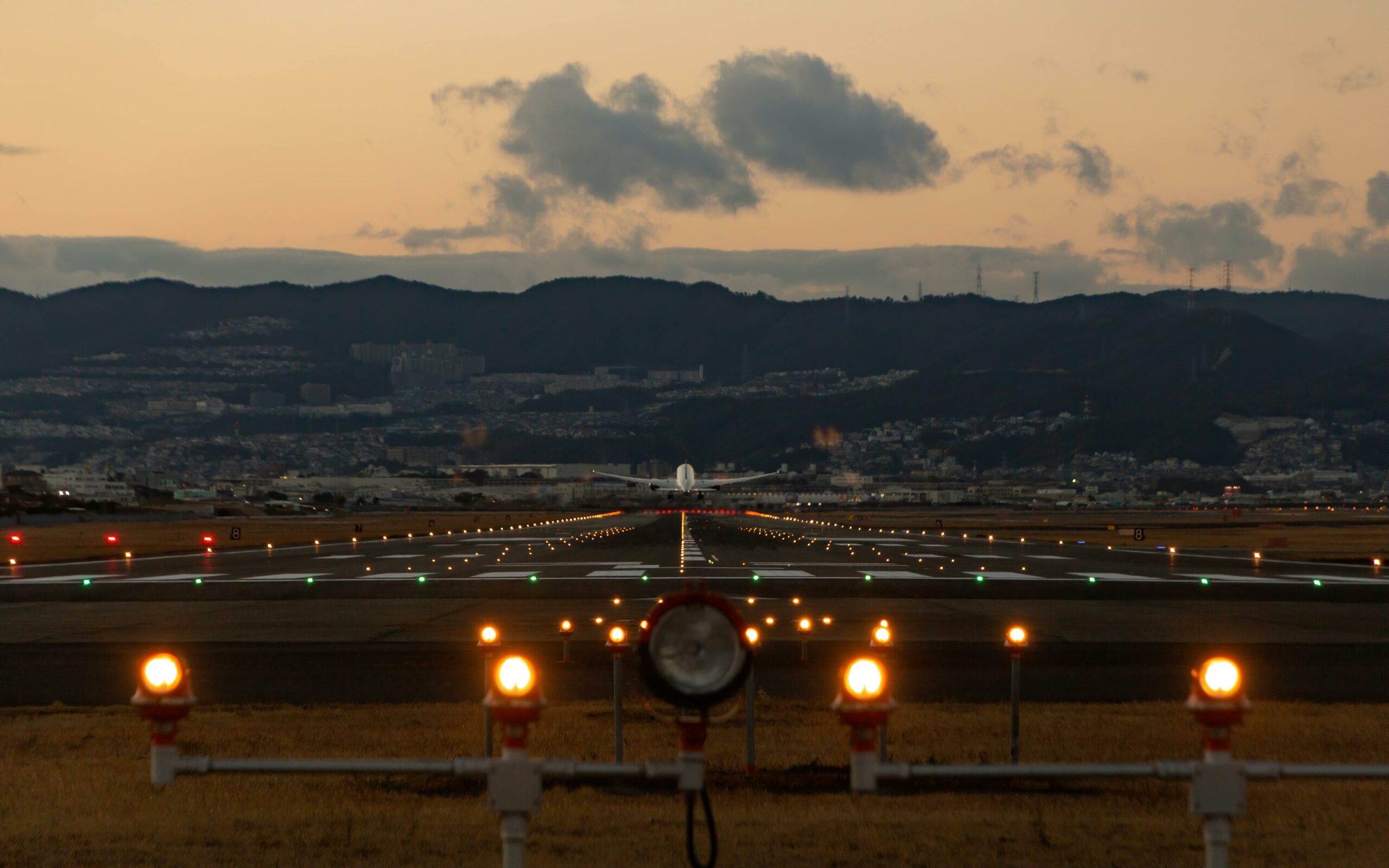The Impact of COVID-19 on Air Travel: A Comprehensive Analysis

The COVID-19 pandemic has left a significant impact on various industries worldwide, including air travel. The pandemic has forced governments to impose travel restrictions, airlines to cancel flights, and travelers to reconsider their travel plans. As a result, the air travel industry has experienced a significant decline in demand and revenue.
The impact of COVID-19 on air travel has been profound, with airlines struggling to stay afloat amidst the pandemic. Governments worldwide have imposed travel restrictions, including border closures, quarantine measures, and flight bans, to curb the spread of the virus. These measures have significantly impacted air travel demand, with many travelers canceling or postponing their trips. As a result, airlines have been forced to cancel flights, reduce their capacity, and even ground their fleet.
The Immediate Impact of the Pandemic

The COVID-19 pandemic had an immediate and significant impact on the air travel industry. As the virus spread rapidly across the globe, governments around the world implemented travel restrictions and lockdown measures in an effort to contain the crisis. This led to a sharp decline in air travel, with many airlines forced to cancel flights and reduce their operations.
Airports were hit particularly hard by the crisis. With fewer passengers travelling, many airports saw a significant drop in revenue. Some airports even had to close temporarily due to the lack of demand. In addition, airports had to implement new health and safety measures to protect passengers and staff, such as mandatory mask-wearing and social distancing.
Passengers were also affected by the crisis. Many had to cancel their travel plans due to travel restrictions and lockdown measures. Those who did travel had to navigate a range of new health and safety protocols, such as mandatory COVID-19 tests and quarantine requirements.
The airline industry as a whole faced a major crisis as a result of the pandemic. With reduced demand for air travel, airlines were forced to cut costs and reduce their operations. Many airlines had to lay off staff and even file for bankruptcy. The International Air Transport Association (IATA) estimated that the airline industry lost $370 billion in revenue in 2020 due to the pandemic.
Overall, the immediate impact of the COVID-19 pandemic on air travel was significant and far-reaching. While the industry has started to recover as vaccination rates increase and travel restrictions are lifted, it will likely take some time for air travel to fully return to pre-pandemic levels.
The Effect on Different Regions

Europe
Europe was one of the hardest hit regions during the COVID-19 pandemic, with many countries imposing strict travel restrictions and lockdowns. This resulted in a significant decrease in air travel, with many airlines being forced to cancel flights and reduce their operations. The International Air Transport Association (IATA) estimates that the European aviation industry lost over $140 billion in revenue in 2020.
Africa
The impact of COVID-19 on air travel in Africa has been significant, with many countries closing their borders and imposing travel restrictions. This has resulted in a significant decrease in air traffic, with many airlines being forced to cancel flights and reduce their operations. According to the African Airlines Association (AFRAA), the African aviation industry lost over $8 billion in revenue in 2020.
North America
The COVID-19 pandemic had a significant impact on air travel in North America, with many airlines being forced to cancel flights and reduce their operations. The United States was one of the hardest hit countries, with many states imposing travel restrictions and lockdowns. According to the IATA, the North American aviation industry lost over $88 billion in revenue in 2020.
Latin America
The impact of COVID-19 on air travel in Latin America has been significant, with many countries closing their borders and imposing travel restrictions. This has resulted in a significant decrease in air traffic, with many airlines being forced to cancel flights and reduce their operations. According to the Latin American and Caribbean Air Transport Association (ALTA), the Latin American aviation industry lost over $18 billion in revenue in 2020.
Middle East
The COVID-19 pandemic had a significant impact on air travel in the Middle East, with many countries closing their borders and imposing travel restrictions. This has resulted in a significant decrease in air traffic, with many airlines being forced to cancel flights and reduce their operations. According to the IATA, the Middle Eastern aviation industry lost over $40 billion in revenue in 2020.
Caribbean
The impact of COVID-19 on air travel in the Caribbean has been significant, with many countries closing their borders and imposing travel restrictions. This has resulted in a significant decrease in air traffic, with many airlines being forced to cancel flights and reduce their operations. According to the Caribbean Tourism Organization (CTO), the Caribbean aviation industry lost over $1 billion in revenue in 2020.
Changes in Flight Operations

The COVID-19 pandemic has brought about significant changes in the aviation industry, particularly in flight operations. Airlines around the world have had to adapt to new regulations and guidelines to ensure the safety of passengers and crew members. Here are some of the changes that have been implemented in flight operations:
Grounded Flights
Many airlines have been forced to ground a significant portion of their fleet due to reduced demand for air travel. This has resulted in a significant decrease in the number of flights available to passengers. Airlines have also had to cancel flights due to travel restrictions imposed by governments to contain the spread of the virus.
Changes in Routes
Airlines have had to adjust their routes to reflect changing demand for air travel. Many airlines have suspended or reduced service to destinations that are experiencing high levels of COVID-19 infections. Some airlines have also launched new routes to destinations that have managed to control the spread of the virus.
Flying During the Pandemic
Airlines have implemented new measures to ensure the safety of passengers and crew members during flights. These measures include mandatory mask-wearing, enhanced cleaning protocols, and social distancing measures where possible. Some airlines have also introduced new technologies such as HEPA filters to improve air quality on board aircraft.
Domestic Travel
Domestic travel has been less affected by the pandemic than international travel. Many airlines have continued to operate domestic flights, although with reduced frequency. Some airlines have also introduced new routes to cater to domestic demand.
Business Travel
Business travel has been significantly impacted by the pandemic. Many companies have implemented travel restrictions, and some have even banned business travel altogether. This has resulted in a significant decrease in demand for business class seats on flights.
Exposure to COVID-19
Despite the measures implemented by airlines, there is still a risk of exposure to COVID-19 during air travel. Passengers are advised to follow all guidelines and regulations implemented by airlines and governments to reduce the risk of exposure. Some airlines have also introduced flexible booking policies to allow passengers to change their travel plans if they become ill or are exposed to the virus.
Overall, the COVID-19 pandemic has brought about significant changes in flight operations. Airlines have had to adapt quickly to ensure the safety of passengers and crew members while also dealing with reduced demand for air travel.
Economic Implications

The COVID-19 pandemic has had a significant impact on the global economy, and the air travel industry has not been spared. The industry has been hit hard by the pandemic, with many airlines experiencing significant losses and some even filing for bankruptcy.
As a result of the pandemic, air travel demand has plummeted, leading to a decrease in ticket prices. Airlines have been forced to reduce their prices to attract passengers, but this has not been enough to offset the decline in demand. The industry is expected to take years to recover from the losses incurred during the pandemic.
Lockdowns and travel restrictions imposed by governments around the world have also had a significant impact on the industry. Airlines have been forced to cancel flights and ground their planes, leading to further losses. The industry has been lobbying governments to ease travel restrictions and implement measures to support the industry’s recovery.
Despite the challenges faced by the industry, there have been some positive developments. The pandemic has accelerated the adoption of new technologies, such as contactless check-in and digital boarding passes, which have improved the efficiency of air travel.
In conclusion, the economic implications of the COVID-19 pandemic on the air travel industry have been significant. The industry has experienced losses, bankruptcies, and reduced ticket prices. However, there have also been some positive developments, and the industry is working towards recovery.
Health and Safety Measures

The COVID-19 pandemic has caused significant changes in the air travel industry. Airlines have implemented various health and safety measures to minimize the risk of infection among passengers and crew members. Here are some of the measures that airlines have put in place:
- Mandatory mask-wearing: Airlines require passengers to wear masks throughout the flight, except when eating or drinking. This measure helps reduce the spread of the virus, as masks prevent respiratory droplets from spreading.
- Enhanced cleaning: Airlines have increased the frequency of cleaning and disinfecting aircraft cabins. They use EPA-approved disinfectants to clean high-touch surfaces such as tray tables, armrests, and seat belts.
- Air filtration systems: Most airlines use HEPA filters that remove 99.9% of airborne particles, including viruses. These filters ensure that the air inside the cabin is clean and safe to breathe.
- Social distancing: Some airlines have implemented social distancing measures such as blocking middle seats or limiting the number of passengers on each flight.
- Health screenings: Many airlines require passengers to undergo health screenings such as temperature checks before boarding the flight. This measure helps identify passengers who may have COVID-19 symptoms and prevent them from boarding the flight.
These measures have helped reduce the risk of infection during air travel. However, passengers also have a role to play in maintaining their own health and safety. They should follow the guidelines set by airlines and health authorities, such as wearing masks, washing their hands frequently, and practicing social distancing.
Related Posts:
Industry Response and Future Outlook
The COVID-19 pandemic has had a significant impact on the air travel industry. The International Air Transport Association (IATA) reported a 66% decline in revenue passenger kilometers (RPKs) in 2020 compared to 2019. Domestic air travel saw a slightly quicker recovery than international travel, but both were still affected by travel restrictions and reduced passenger demand.
In March 2020, the pandemic caused a sudden drop in passenger numbers, leading to a decrease in load factors and a reduction in flight schedules. The International Civil Aviation Organization (ICAO) estimated that the pandemic would result in a loss of 1.5 billion passengers in 2020.
The travel industry responded to the pandemic by implementing measures to ensure passenger safety, such as mandatory mask-wearing, increased cleaning protocols, and social distancing measures. Rapid testing and vaccine requirements for international travel have also been implemented to help restore passenger confidence.
The aviation industry has also adapted to the pandemic by adjusting supply to meet demand. Airlines have reduced the number of flights and consolidated routes to minimize costs. Flightradar24 reported that passenger flow in 2021 has been increasing, but it is still below pre-pandemic levels.
The future outlook for the air travel industry remains uncertain. The tourism industry has been hit hard by the pandemic, and it may take several years for international travel to fully recover. However, the implementation of rapid testing and vaccine requirements may help restore passenger demand for international air travel.
Overall, the COVID-19 pandemic has caused significant shocks to the air travel industry. The industry has responded by implementing safety measures and adjusting supply to meet demand. The future outlook remains uncertain, but the industry is hopeful that the implementation of measures such as rapid testing and vaccine requirements will help restore passenger demand for international air travel.

